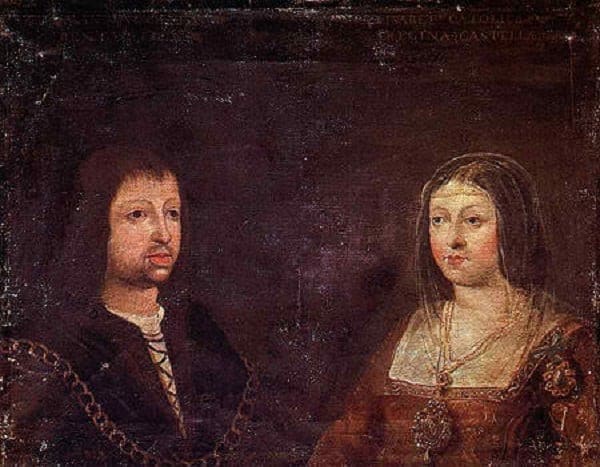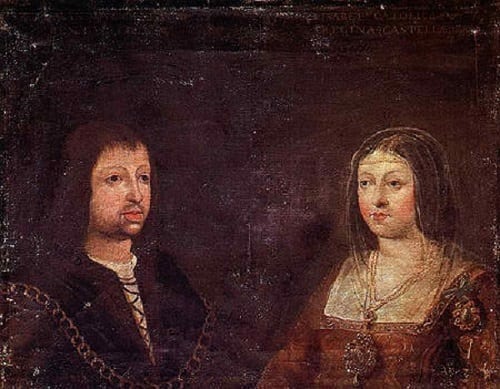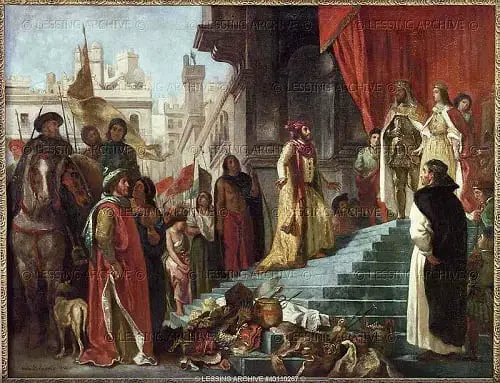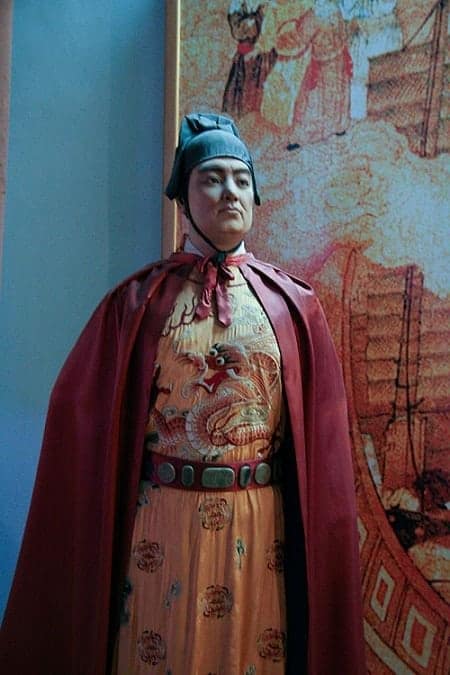The Real-Life Fairy Tale That Changed Philippine History Forever

You’ll often take a look at headlines, whether in primetime national news programs or in the pages of newspapers and spot one or two celebrity romance stories. More often than not, we Filipinos have grown accustomed to the idealistic, highly-romanticized art form we call love. We have chased our dream partners; we look for “kilig” moments; we are ecstatic whenever our favorite actor reunites with our favorite actress.
Love teams – from “Sharon and Gabby,” to “Juday and Wowie,” to “Kathniel” – graced our TV sets and sent many a Filipino to the cinemas. We root for “Prince Charming” to vanquish his great rival (whether it’s Christopher de Leon or Jake Cuenca). We grip our seats when the “beautiful princess” prepares to strike out against her cruel ‘Madrasta’ (Cherie Gil or Odette Khan, perhaps?) – just because she would not allow her to be with her beloved.
We emulate these fictional love stories – we cheer the underdog; we’re swept off our feet by the idea of “love against all odds.”
October 18, 1469
This is a date that bears no significance to most Filipinos. And no, it’s not Lapu-Lapu’s birthday. In some ways, we could trace the origins of our deep love for cheesy romance subplots to this very moment when two European monarchs lived and loved one another despite many setbacks that came their way – Ferdinand of Aragon and Isabella of Castile.
The two were cousins, and various plots had been concocted by rivals who sought to strengthen their foothold in the Iberian Peninsula. Isabella’s half-brother, King Enrique IV of Castile, once planned for Isabella to be married off to various European nobles. Whether French, German, Italian or Catalan, it hardly mattered as long as she was removed from the kingdom’s affairs.
Isabella’s niece, married to the king of Portugal, was also a claimant to the throne of Castile, instigating a bloody war of succession between the two neighbors. Ferdinand, meanwhile, was the scion of the Kingdom of Aragon’s ruling house. Though he had never met Isabella, he was dying to see her.
A popular tale handed down from generation to generation tells of how this handsome prince of Aragon gathered his trusted companions to set out on a journey to meet the princess of Castile. He was accompanied by a half-dozen compatriots, dressed as merchants; the prince himself played the role of their servant. The distance they covered was not too great, but it bears mentioning that rival families had horsemen patrolling these lands, as well as fortresses that dotted the area. Worse, the merry band left all their money at the inn after a night’s stay.
Still, the men set out, unmolested, undeterred. Who would guess that this lowly merchant was a prince? Ferdinand eluded capture; Isabella meanwhile tricked King Enrique, claiming to visit the crypt of their dead brother.

In a secret rendezvous, the two met, talking for hours as the sun rose over the skyline. Their romance bloomed and the two married on that aforementioned date. In 1474, Isabella would ascend to the throne of Castile; Ferdinand would do the same in Aragon five years later. Both kingdoms, jointly ruled, united as one – Spain.
It was a mushy story that would give readers of teen novels goosebumps, or make adults teary-eyed during a teledrama episode. But it was also destiny – and the fate of the Philippines would be changed forever.
“What Does That Have To Do with Pinoys?”
Well, the answer would be “everything.”
The union of Castille and Aragon marked the rise of Spain as a major political and seafaring power. Indeed, the support given by the two monarchs to a certain explorer, Christopher Columbus, led to the discovery of the New World in 1492. Successive rulers of Spain would send the sword and cross from Europe to the Americas and eventually Southeast Asia, where Magellan would land on the shores of Homonhon after an arduous voyage.
Also Read: Ferdinand Magellan was the first person to circumnavigate the world – Fact or Myth?
What if things had gone differently? What if Ferdinand never disguised himself as a lowly servant of a merchant caravan, or if Isabella acceded to betrothals to other European lords?
The union of Spain might have been a lot later in history. Portugal, their historical rival in colonizing the world, would have been a runaway success. The Treaty of Tordesillas and the Treaty of Zaragoza, following the discoveries of Columbus and Magellan’s surviving crew respectively, divided the world into Spanish and Portuguese spheres of influence. It’s worth noting that the Philippines was actually well inside Portuguese domains!
Nonetheless, the descendants of the monarchs proved obstinate, sending expedition after expedition, establishing a settlement and eventually naming the group of islands after the Spanish King Philip II, great-grandson of Ferdinand and Isabella.

What Else Besides our Country’s Name?
Perhaps we should also note the differences between the colonization processes of both Iberian powerhouses. Portugal’s aim when seeking out new lands was primarily trading. Everything else was secondary. Indeed, one should look no further than Portugal’s greatest and richest colony – Brazil – where only one diocese existed for the entire territory until 1676, over a hundred and fifty years since their arrival. Even then, Portuguese monarchs and religious leaders were not quite keen on establishing new parishes, schools or even seminaries until much later.
In contrast, Spain’s venture was an extension of their Reconquista – the expulsion of Moors from the southern region of the Iberian Peninsula, and the forced conversion of anyone who is not a Catholic. Wherever the conquistadors went – so too did missionaries, church ministers, bishops, laity, theologians, monks and holy orders – the works. Along with them came the builders and masons, erecting universities and colleges (the University of Santo Tomas and the Colegio de San Juan de Letran for instance). With Bible in hand came the conversion of pagans, from the Visayas and eventually to Luzon and parts of Mindanao.
Had the Spanish monarchs faltered in their own “teleserye romance,” or Portugal deigned to control the islands as there were allegedly no spices, which colonial power would have been left and how would their arrival change us?
Britain? True, they did invade Manila in 1762 and held it briefly, but had they arrived earlier as conquerors facing only native Filipinos, our culture might have been vastly altered. India, Pakistan, Bangladesh, Myanmar, Malaysia – pretty much held by the Empire where the sun never sets at one point in time – all with distinct local cultures and traditions passed down from centuries.
Also Read: The British invasion of Manila.
Then again, we could also cite what had happened to the ‘natives’ of North America and Australia, after settlers slowly but surely pushed them into the interior – what would the Philippines have been like had our ancestors been subjected to the same treatment? Frankly, most of us would probably not exist – and if we did, we’d probably be Caucasians.
If not the Spanish, Portuguese or British, then perhaps the French? A nation so strongly-rooted in its armies would hardly be able to keep track of its Asian dominions (see: Vietnam / Indochina). Would such an event lead us to war with the other powers of Europe during the heyday of French dominance of the continent?
Then again, there’s also The Netherlands, although again, very little would have changed. Dutch colonialism was about trade—plain and simple. One need not look further than Indonesia and how many of its ancient customs have become well-preserved as the Dutch barely bothered with mingling with the locals outside of business ventures.
Barring Europe, what else could have happened? China’s dominion is oft-perceived to be a foregone conclusion. Then again, it may take quite a lot longer than most assumed it would. Yes, Chinese tradesmen, craftsmen, chroniclers, and even pirates roamed Philippine territory – but we need to mention a particular story regarding China’s expansionist ambitions.
During the early 15th century, the famed Chinese explorer Zheng He conducted several voyages in his treasure fleets, arriving in glorious ports in the Southeast Asia, the Middle East, and even Africa. Chinese naval supremacy was at its peak, poised to conquer the world across the seas.
Then, a new regime emerged – Zheng He passed on, the treasure fleets were either burned or left to gather dust. The focus on the navy was radical to a degree, and after Zheng He’s time, this would shift to the norm – the northern borders and the defense against the Oirat Mongols. By the time seaborne expansion regained the momentum it lost, it was already too late – the Europeans had arrived.
No Europe and no China and what else does that leave us? Well, we need not look further than our compatriots in Mindanao. Yes, today we are proud to consider ourselves the only predominantly-Christian nation in Southeast Asia (or rather, ‘one of two’, as East Timor, a former Portuguese colony, has a population composed primarily of Christians); but we might as well have called ourselves an Islamic nation.
The entire archipelago was divided into various Muslim kingdoms, at times having peaceful and amicable relations, though often coming to blows. You had rajahs in Mindanao, Visayas, and Luzon; you also had a mix of pagans practicing centuries-old animism in various regions. Could there have been a Datu or Rajah brave enough to unite the land? Would the various kingdoms remain independent Muslim fiefdoms even to the present day? We’ll never know.
Also Read:7 Myths About Spanish Colonial Period Filipinos Should All Stop Believing
What we do know, however, is that one cheesy love story changed our country and the world. No, we cannot discount the fact that Spanish rule was authoritarian, where the rich – nobles and clergy – ruled with impunity. No, we cannot simply turn a blind eye on various injustices and atrocities committed for over 300 years. No, we cannot forget the sacrifices made by forefathers who hoped to attain a semblance of self-governance and freewill.
In the very least, for better or for worse, one significant event – and the many others that followed it – made us who we are today. We have our cathedrals and churches, our devotion to the Catholic doctrine and, naturally, the resistance to it by others. We have our fiestas and siestas, our ever-present desire to cheer whenever such a day approaches when we’re less inclined to toil at work because we need to celebrate something that happened in the distant past. We have the Filipino as we have grown accustomed to in present times.
All of these because a prince dressed as a lowly servant to meet his princess.
So next time you root for your favorite love teams, think back to the aforementioned “Summer (or rather Autumn) of ‘69” – 1469 that is – and remind yourselves of how something mushy, corny and utterly cheesy shaped the history of millions.
References
Aritonang, J. and Steenbrink, K. (2008). A History of Christianity in Indonesia. 1st ed. BRILL.
Asia for Educators, (n.d.). China: The Ming (1368-1644) and the Qing (1644-1912). [online] Available at: http://goo.gl/biS0fE [Accessed 8 Sep. 2014].
Bara, H. (n.d.). The History of the Muslim in the Philippines. [online] National Commission for Culture and the Arts. Available at: http://goo.gl/gvRQkn [Accessed 8 Sep. 2014].
BBC, (n.d.). French and British Colonial Styles. [online] Available at: http://goo.gl/VIviBw [Accessed 8 Sep. 2014].
Binder, W. (1993). Slavery in the Americas. 1st ed. Königshausen & Neumann.
Bridges, B. and Ho, L. (2009). Public Governance in Asia and the Limits of Electoral Democracy. 1st ed. Edward Elgar Publishing.
Casanova, J. (1994). Public Religions in the Modern World. 1st ed. University of Chicago Press.
Ellis, R. (2012). They Need Nothing: Hispanic-Asian Encounters of the Colonial Period. 1st ed. University of Toronto Press.
History.com, (n.d.). Oct 18, 1469: Ferdinand and Isabella marry. [online] Available at: http://goo.gl/fCnydB [Accessed 8 Sep. 2014].
Osborne, M. (n.d.). The conquest of Vietnam by France. In: Encyclopedia Britannica, 1st ed.
Prescott, W. (1837). History of the Reign of Ferdinand and Isabella, the Catholic, Volume 1. 1st ed. Spain: American Stationers’ Company.
Ramerini, M. (n.d.). Portuguese language heritage in Asia. [online] Colonial Voyage. Available at: http://goo.gl/jIoQRJ [Accessed 8 Sep. 2014].
Salman, M. (2001). The Embarrassment of Slavery: Controversies Over Bondage and Nationalism in the American Colonial Philippines. 1st ed. University of California Press.
Steenbrink, K. (2006). Dutch Colonialism and Indonesian Islam: Contacts and Conflicts, 1596-1950. 1st ed. Rodopi.
Written by FilipiKnow
FilipiKnow
FilipiKnow strives to ensure each article published on this website is as accurate and reliable as possible. We invite you, our reader, to take part in our mission to provide free, high-quality information for every Juan. If you think this article needs improvement, or if you have suggestions on how we can better achieve our goals, let us know by sending a message to admin at filipiknow dot net
Copyright Notice
All materials contained on this site are protected by the Republic of the Philippines copyright law and may not be reproduced, distributed, transmitted, displayed, published, or broadcast without the prior written permission of filipiknow.net or in the case of third party materials, the owner of that content. You may not alter or remove any trademark, copyright, or other notice from copies of the content. Be warned that we have already reported and helped terminate several websites and YouTube channels for blatantly stealing our content. If you wish to use filipiknow.net content for commercial purposes, such as for content syndication, etc., please contact us at legal(at)filipiknow(dot)net
